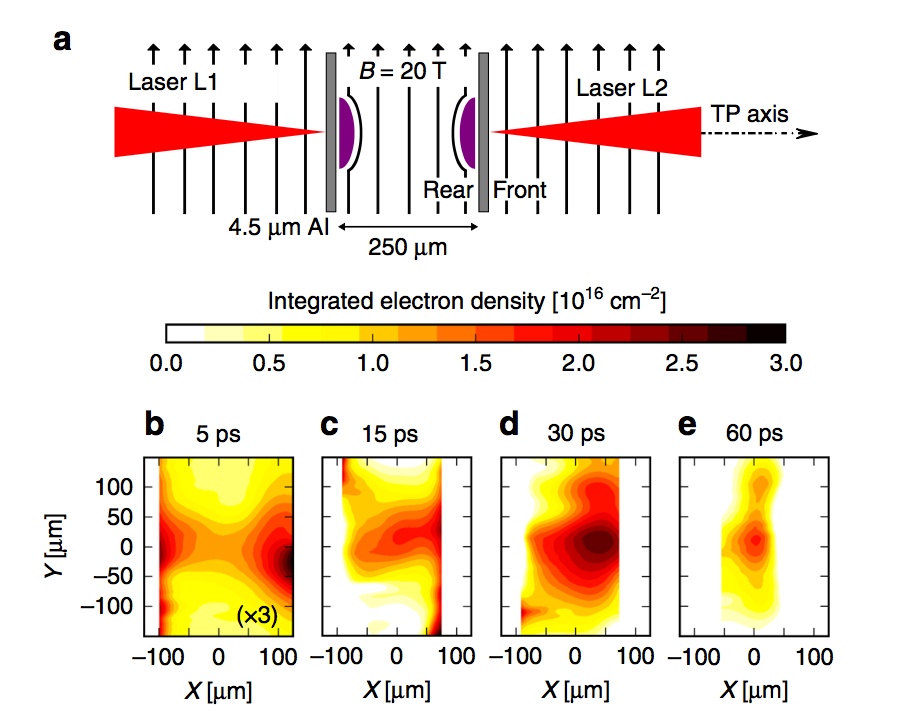Collisionless shocks and cosmic radiation

To understand the origin of cosmic rays, both those generated by our Sun and the most energetic astroparticles (beyond >1015 eV), the LULI teams study their supposed acceleration mechanisms, which are associated with "non-collisional shocks".
Principle:
Among these processes, Weibel-type instabilities (related in particular to electronic temperature anisotropies) have long been of interest because of their role in the creation of non-collisional shocks and the generation (and/or amplification) of electromagnetic fields.

What we have realized at LULI :
Non-collisional shocks can energize particles via two broad classes of processes: (1) either via electromagnetic turbulence generated by instabilities triggered by the shocks (so-called Fermi processes), (2) or by direct interaction of particles with the electric field associated with the shock front. The LULI has recently highlighted that the Weibel instability involved in the Fermi process occurs on much larger time and space scales than was commonly thought [Nature Phys. 16, 983 (2020)]. We have also shown that under strong magnetization conditions, this field can become compressed by fast plasmas and give rise to particle acceleration [Communication Physics 2, 60 (2019)]. Finally, we have also highlighted a phenomenon of "shock surfing" by particles present in the ambient astrophysical medium and which allows them to be sufficiently accelerated to serve as an injection point in Fermi processes [Nat. Physics 17, 1177 (2021)].
Contacts :
lorenzo.romagnani[at]polytechnique.edu
mickael.grech[at]polytechnique.edu
julien.fuchs[at]polytechnique.edu




